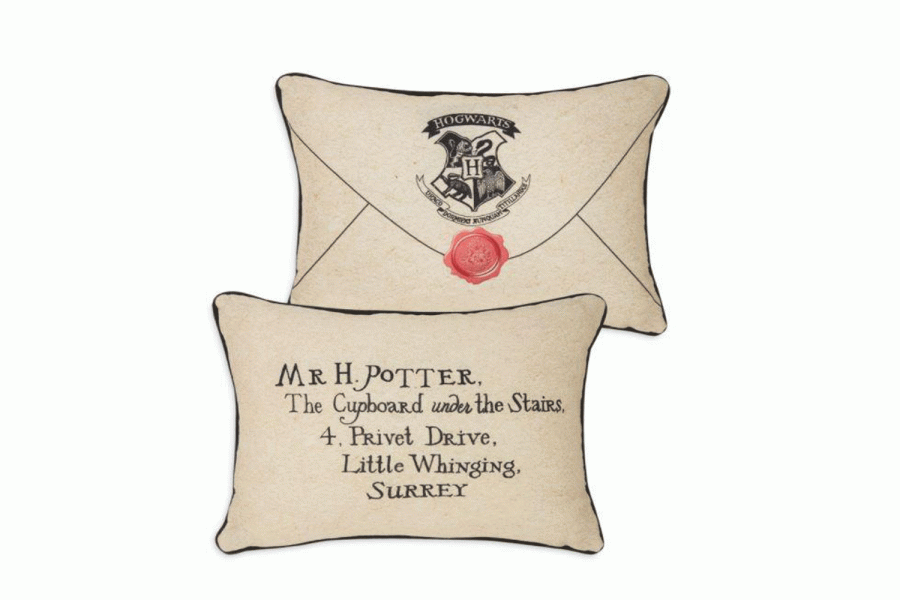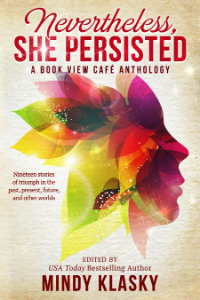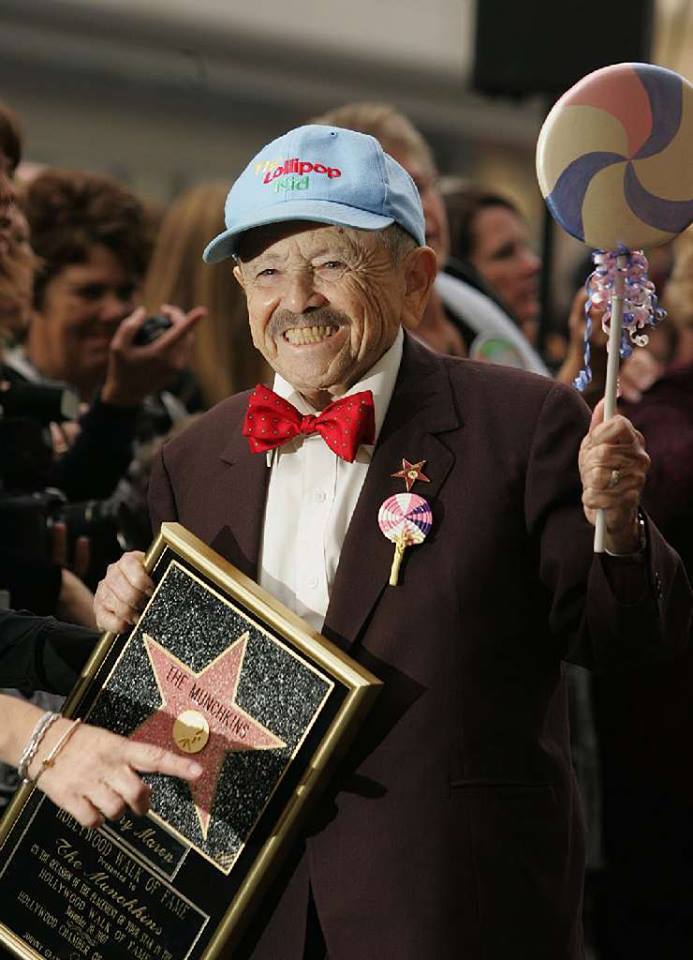(1) RECORD LONGEVITY. Who knew?
#TheHugoAwards are "officially amazing"! Receiving the Guinness Book of World Records certificate. #Worldcon75 pic.twitter.com/L33rRsN7SR
— Worldcon 75 (@worldcon75) August 11, 2017
Or as Paul Mackintosh says at Teleread: “Hugo Awards get their own award – from the Guinness Book of World Records”.
In the course of Worldcon 75, the organizers have just announced that “the Hugo Awards have been recognized by the Guinness Book of World Records as the longest-running science fiction award.”
(2) HUGO VOTING STATISTICS. If you haven’t already seen them, here’s where you can download the reports.
(3) IT CAUSES ME TO TINGLE. Chuck knew it all along. And had a book ready to go.
yes it may come as shock i have lost 2nd hugo award nomination but i have known for years (from traveling ahead in timeline) suprise gotcha!
— Chuck Tingle (@ChuckTingle) August 11, 2017
please understand winner of hugos award is @NussbaumAbigail this is blog that they write and prove love thank you https://t.co/1Q1QSDcwFy
— Chuck Tingle (@ChuckTingle) August 11, 2017
(4) BONUS WOMBAT COVERAGE. She dared to enter the Hugo Losers Party.
GRRM punishes winners at the Hugo Losers Party. I accept my fate. pic.twitter.com/ytJJaNQbAN
— Kingfisher & Wombat (@UrsulaV) August 11, 2017
(5) HUGO VOTING ELIGIBILITY CHANGE. Something else passed at the business meeting —
https://twitter.com/tinytempest/status/895981420836904960
(6) WORLDCON 75 DAILY NEWZINE. The Worldcon daily zine reports there were 4,759 visitors on Day 1. Who knows what other tidbits you’ll find in the issues linked here?
- http://www.worldcon.fi/wp-content/uploads/2017/08/conzine_1.pdf
- http://www.worldcon.fi/wp-content/uploads/2017/08/conzine_2.pdf
- http://www.worldcon.fi/wp-content/uploads/2017/08/conzine_3.pdf
- http://www.worldcon.fi/wp-content/uploads/2017/08/conzine_4.pdf
- http://www.worldcon.fi/wp-content/uploads/2017/08/conzine_5.pdf
(7) ANOTHER BRILLIANT OBSERVATION. From a W75 panel:
Savior complex: Americans wouldn't want a Canadian hero to save them, so why should brown people need a white hero? #Worldcon75
— festive wooper (@Zeteram) August 11, 2017
Er, were we really that reluctant we were to being saved by heroes played by William Shatner and Lorne Greene?
(8) THE WATCHER. Jo Lindsay Walton shares sightings of “Power Couples of WorldCon: A Field Guide”.
Malcolm Devlin and Helen Marshall. Travellers to antique lands frequently flock to Shelley’s two vast and trunkless legs of stone. But why not squint up with the locals into the desert firmament azure, where hover two vast and trunkless arms of flame, Helen and Malcolm?
(9) CYCLIC HISTORY. Ah yes. Those who don’t know the lessons of fanhistory are doomed to repeat them. As are those who do know them.
more about dragon awards: here's what Asimov wrote about the Futurians in his memoir. fascinating how stable this phenomenon is pic.twitter.com/lKNZ6ribkJ
— Francis Bass (@FrancisRBass) August 10, 2017
(10) WIZARDLY INTERIOR DÉCOR. The Evening Standard knows where to find it: “Primark works its magic with a new Harry Potter collection”.
Witches and wizards the world over will rejoice this week at the news that Primark has announced it will be introducing a Harry Potter range to its stores in honour of the famous book series’ 20th anniversary.
The high street retailer, which is famed for its bargains, has created an official range of clothing, stationery and home accessories in line with the wizarding theme which will be available in shops from next week.
Fans of the fantasy world will be able to pick up everything from potion shaped fairy lights (£8) to cauldron mugs (£6) with some items costing as little as £2.
The wait will finally be over for those after their Hogwarts acceptance letter too, which can be bought on a cushion for £4 and whether you’re a Gryffindor, Hufflepuff, Ravenclaw or Slytherin, you’ll be able to pick up a pair of pyjamas in your house colours for just £6.
(11) BANK WITH THE BARD. Here’s what the world has been waiting for: “Batman 1966 Shakespeare Bust Bank”.
To the Batpoles! This awesome 20? tall replica of the Shakespeare bust from the 1966 Batman TV series doubles as a coin bank. Like the prop, the coin slot (along with the customary dial and button) is hidden inside the bust’s neck. See it unboxed on video here.
(12) WALKING DEAD CREATOR ANKLES TO AMAZON. From io9: “Walking Dead Creator Robert Kirkman Leaving AMC, Signs New TV Deal With Amazon”.
The Walking Dead has been a big money-making success at AMC, pulling in an impressive amount of viewers for the network. But Skybound—the entertainment company founded by The Walking Dead creator Robert Kirkman—just announced that Amazon will be the home of all their new TV content moving forward.
(13) COMIC SECTION. Chip Hitchcock found more on autonomous cars in Arctic Circle.
(14) THE TRUE SIGN OF QUALITY. Camestros Felapton (or was it Timothy?) put his marketing and design skills to the test.
Exciting New Book Sticker! https://t.co/O3xKUoFdug pic.twitter.com/OJ8oDdA9Wy
— Camestros Felapton (@CamestrosF) August 11, 2017
(15) NUCLEAR FREE ZONE. The South China Morning Post makes an appeal: “If Trump must start a nuclear war, at least let us finish Game of Thrones first”.
I’m not worried about American lives above everyone else’s – hopefully nobody has to die because of two unhinged custodians of nuclear power taking brinkmanship too far – but there is one American who must be kept safe, no matter what.
I’m talking about George R. R. Martin, the author of the epic fantasy book series, A Song of Ice and Fire, better known to most people as Game of Thrones, the HBO hit series that is, hands down, the best show on TV these days.
… But if you’ve read the books, you’ll agree that the TV show is not a patch on Martin’s writing and sheer storytelling genius. He makes The Lord of the Rings look like a slow ride to grandma’s cottage. George R.R. Martin is J. R.R. Tolkien on steroids, and then some.
(16) LOST LIGHT. Electric Lit talks to someone who has seen Octavia Butler’s papers at the Huntington: “Now More than Ever, We Wish We Had These Lost Octavia Butler Novels”
In 2006, Butler died of a stroke outside her home in Lake Forest Park, Washington. Her many papers now reside at the Huntington, a private library in San Marino, California. Curator Natalie Russell describes the collection as including “8,000 manuscripts, letters and photographs and an additional 80 boxes of ephemera.”
On display there now are numerous treasures, including working manuscript pages from The Parable of the Sower covered in her brightly colored notes: “More Sharing; More Sickness; More Death; More Racism; More Hispanics; More High Tech.”
There are the beautiful, bold affirmations that recently went viral online, which she wrote to frame her motives for writing: “Tell Stories Filled With Facts. Make People Touch and Taste and KNOW. Make People FEEL! FEEL! FEEL!” On one page of her journals she visualized the success that she desired: “I am a Bestselling Writer. I write Bestselling Books And Excellent Short Stories. Both Books and Short Stories win prizes and awards.”
But what is not on public view are the drafts?—?the things she had hoped to write someday and never did, including The Parable of the Trickster.
Scholar Gerry Canavan described getting a look at that work-in-progress for the LA Review of Books in 2014:
Last December I had the improbable privilege to be the very first scholar to open the boxes at the Huntington that contain what Butler had written of Trickster before her death. What I found were dozens upon dozens of false starts for the novel, some petering out after twenty or thirty pages, others after just two or three; this cycle of narrative failure is recorded over hundreds of pages of discarded drafts. Frustrated by writer’s block, frustrated by blood pressure medication that she felt inhibited her creativity and vitality, and frustrated by the sense that she had no story for Trickster, only a “situation,” Butler started and stopped the novel over and over again from 1989 until her death, never getting far from the beginning.
The novel’s many abandoned openings revolve around another woman, Imara, living on an Earthseed colony in the future on a planet called “Bow,” far from Earth. It is not the heaven that was hoped for, but “gray, dank, and utterly miserable.” The people of Bow cannot return to Earth and are immeasurably homesick. Butler wrote in a note, “Think of our homesickness as a phantom-limb pain?—?a somehow neurologically incomplete amputation. Think of problems with the new world as graft-versus-host disease?—?a mutual attempt at rejection.”
(17) NEVERTHELESS. Mindy Klasky has put together an anthology by Book View Café authors, “Nevertheless, She Persisted”. It has released in July Here’s the table of contents.
“She was warned. She was given an explanation. Nevertheless, she persisted.”
Those were the words of Mitch McConnell after he banned Senator Elizabeth Warren from speaking on the floor of the United States Senate. In reaction to the bitter partisanship in Trump’s United States of America, nineteen Book View Café authors celebrate women who persist through tales of triumph—in the past, present, future, and other worlds.
From the halls of Ancient Greece to the vast space between stars, each story illustrates tenacity as women overcome challenges—from society, from beloved family and friends, and even from their own fears. These strong heroines explore the humor and tragedy of persistence in stories that range from romance to historical fiction, from fantasy to science fiction.
From tale to tale, every woman stands firm: a light against the darkness.
Table of Contents:
- “Daughter of Necessity” by Marie Brennan
- “Sisters” by Leah Cutter
- “Unmasking the Ancient Light” by Deborah J. Ross
- “Alea Iacta Est” by Marissa Doyle
- “How Best to Serve” from A Call to Arms by P.G. Nagle
- “After Eden” by Gillian Polack
- “Reset” by Sara Stamey
- “A Very, Wary Christmas” by Katharine Eliska Kimbriel
- “Making Love” by Brenda Clough
- “Den of Iniquity” by Irene Radford
- “Digger Lady” by Amy Sterling Casil
- “Tumbling Blocks” by Mindy Klasky
- “The Purge” by Jennifer Stevenson
- “If It Ain’t Broke” by Maya Kaathryn Bohnhoff
- “Chataqua” by Nancy Jane Moore
- “Bearing Shadows” by Dave Smeds
- “In Search of Laria” by Doranna Durgin
- “Tax Season” by Judith Tarr
- “Little Faces” by Vonda N. McIntyre
(18) RECOMMENDED TO PRODUCERS. Observation Deck tells “Why Fafhrd and the Gray Mouser Should Be the Next Game of Thrones”
Fritz Leiber, a science fiction and fantasy author, wrote a story in 1939 called “Two Sought Adventure” starring Fafhrd, a large barbarian from the frozen North, and the Gray Mouser, a taciturn thief. Soon, Leiber realized he could use these characters to not only poke fun at the Conan the Barbarian-type stories that pervaded fantasy magazines, but to also construct his own fantasy world and deconstruct a various number of characters and tropes.
Fafhrd and the Gray Mouser sold their services to anyone with the right coin — more importantly, Mouser was a former member of the Thieves’ Guild and would often go up against his former employers. But they also went on adventures due to bets or because they wanted to have a bit of fun. Sometimes they got into trouble because of drink or because of women — they were often subject to the Cartwright Curse, where their love interests ended up dead by the end of the story. However, later stories gave both of them long-term girlfriends, even if one of them was, uh, a big unconventional.*
* One of Mouser’s girlfriends was Kreeshka, a ghoul, whose skin and organs are all invisible. Which means she looks like an animated skeleton. Whatever you do, don’t think about their sex life.
(19) BUGS, ZILLIONS OF ‘EM. Starship Troopers: Traitor of Mars trailer #3:
(20) SHOOTING AND BLOWING UP. Kingsman 2 trailer #3 TV spot.
[Thanks to JJ, John King Tarpinian, Lee Whiteside, Cat Eldridge, Carl Slaughter, Andrew Porter, and Michael J. Walsh for some of these stories. Title credit belongs to File 770 contributing editor of the day Soon Lee.]










